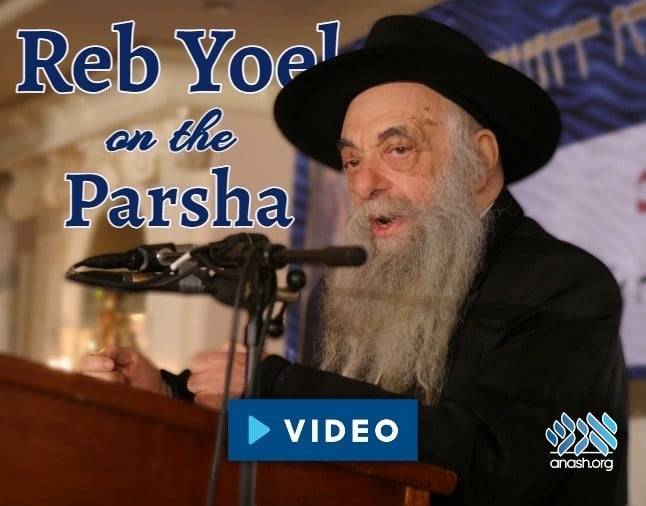ב׳ אב ה׳תשפ״ג | July 20, 2023
Watch: Reb Yoel On the Month of Av
Watch: A short lesson by Reb Yoel Kahn on Chodesh Av with an English transcript.

Watch: A short lesson by Reb Yoel Kahn on Chodesh Av with an English transcript.
Watch a short lesson by Reb Yoel Kahn on Chodesh Av with an English transcript.
Scroll down for the English transcript.
VIDEO:
TRANSCRIPT:
There is a custom to refer to the month of Av as “Menachem Av,” and the halacha is that if the month was given simply as “Menachem” in a legal document, the contract remains valid because the name which was used leaves no room for doubt. “Av” of course has unfavorable connotations, and signifies a lessened state of happiness, while “Menachem” means consolation, particularly in reference to the negativity of “Av” itself.
Maternal Consolation, Paternal Mercy
However, there’s a Midrash which states: A father (“av”) is merciful (“rachem”), a mother (”eim”) is comforting (“nachem”), and Hashem pledges to practice both. So instead of understanding “Menachem Av” literally, this suggests that it is a combination of two elements: The maternal trait of consolation, “Menachem,” as well as paternal mercy, “Av.” So we are dealing with three factors here: The literal negativity of “Av,” the “Menachem” response, as well as the deeper meaning of “Av.”
Chassidus explains that a father only contributes the essential core which then undergoes a process in the mother whereby it takes shape in all its detail. This ultimately means that the end product has a closer connection with the mother, which is why a child tends to love his mother to a greater extent, while he fear his father more. And it is this dualistic model which will turn out to be correlated with the distinction between comfort and mercy, where consoling is defined as making the best of a loss which cannot be filled, whereas responding mercifully indicates the ability to take something broken and make it whole.
On Our Own Terms
Every phenomenon we witness in this world is rooted in the spiritual reality above, and our conception of father-mother resembles the mental faculties of chochma–bina. Bina is about the meticulous focus on details which feeds into the midos, while chochma is simply the essential point; bina interacts closely by its nature with the midos, while chochma is distant. These in turn correspond to the cosmic entities by the same name, where bina is connected with creation and considered its source, while chochma is entirely higher to the extent that in its perception nothing exists outside of Hashem.
It is for this reason that bina, operating within the parameters of existence, can only offer comfort in face of a loss, but is unable to change the reality of the problem. The enduring pain is implicit to the act of consolation which is the reason nichum aveilim is counterproductive after the time designated for mourning. Mercy transcends the trouble altogether.
But since Hashem doesn’t face the constrictions we do, why then does He make use of both traits? What does consoling add if He offers mercy?
The Rebbe explains that the entire point is that the world should transform itself from within; if Hashem only related to us through chochma, we’d live in a flawless world, but that would just be G-dliness overruling our world’s properties. Dira b’tachtonim requires an initiative on our end, on our own terms.
Mesiras Nefesh and Sechel
Everything stated previously about chochma and bina applies equally to our avoda, which is the arena where we accomplish our mission. The focus of avoda is the outcome, the state of our midos and behavior, and the straightforward way to achieve that is through bina, reflecting on Hashem’s greatness and training our mind to choose G-dliness over materialism.
Yet precisely because bina is overly occupied with sechel’s intricacies, the fact that everything has a counterpoint means that erring is likely, and bina is too confined to the world’s dimensions in any case to be able to fill any gaps. This is why there’s also a need for chochma, to be able to break through earthly limitations, which in terms of avoda is mesiras nefesh, ignoring the mind and its calculations. However to use this model exclusively would be to ignore the midos, which is why both “Menachem” and “Av” are necessary; hisbonenus and bitul simultaneously.
For further learning see לקוטי שיחות חלק ד’ ע’ 1080 ואילך.


We appreciate your feedback. If you have any additional information to contribute to this article, it will be added below.